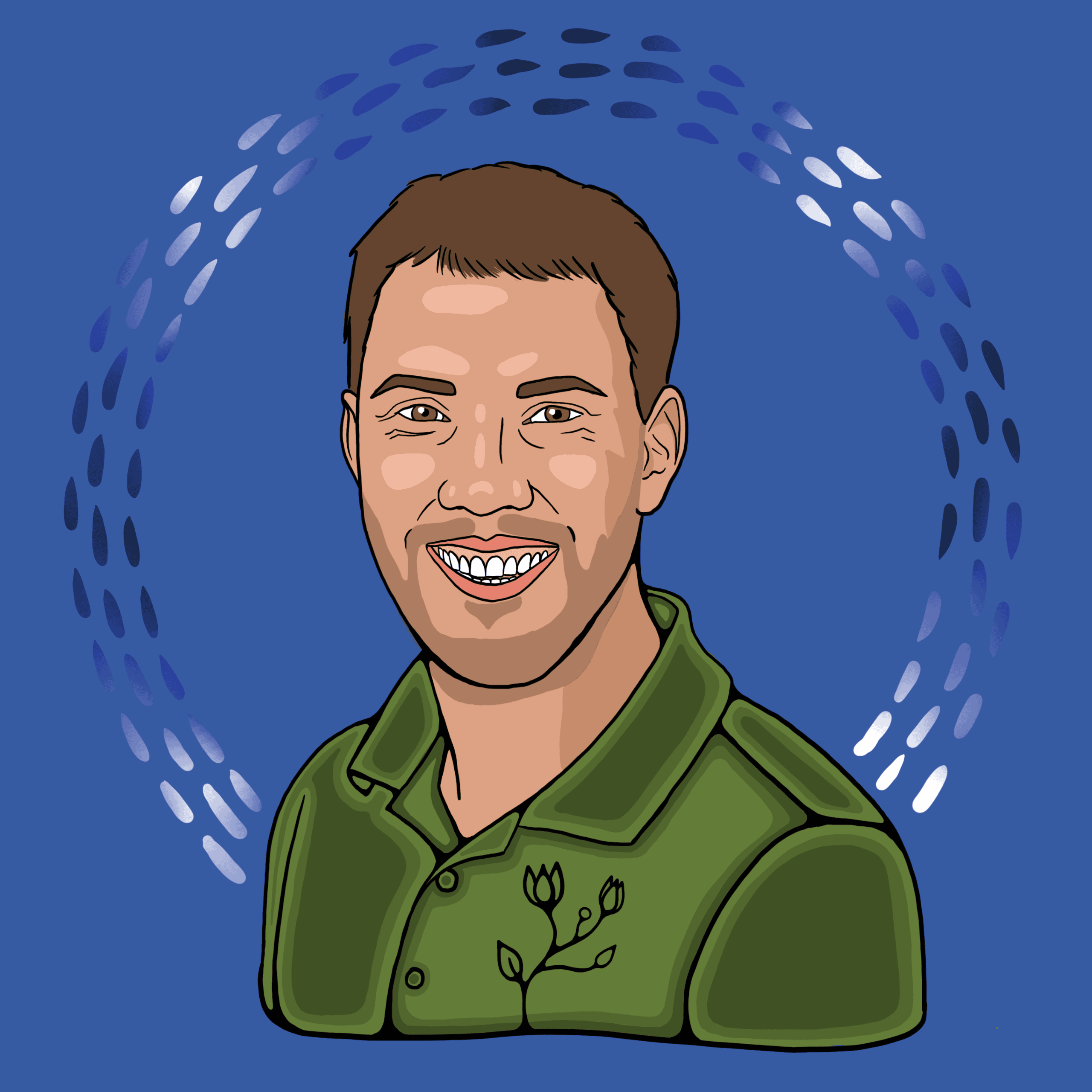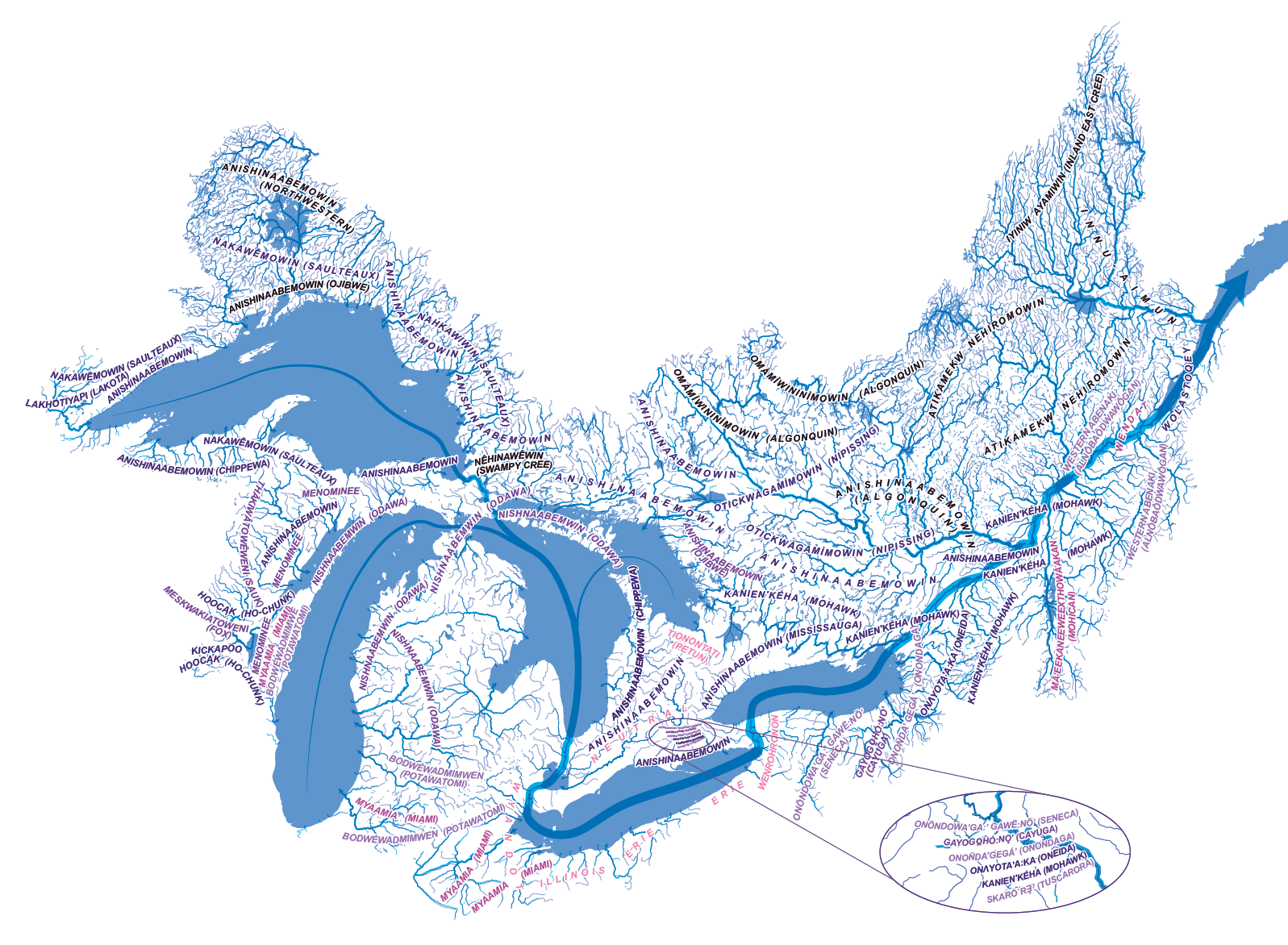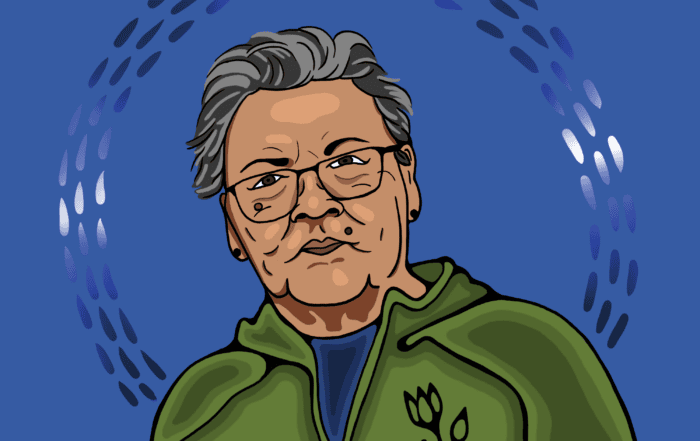
Portrait of Jarrid Baldwin by Miskwaa Designs.
The Miami Tribe of Oklahoma is our official name. Miami Tribe of Oklahoma is what we usually use because that’s what we got removed to back in the 1800s, but our homelands are here in the Indiana, Ohio and Michigan areas.
Just a little background: we don’t have fluent speakers in our language. I’m still a learner of the language, while also teaching it. We have about 300 years worth of rich documentation on our language but we haven’t gone through it all yet. So we’re still very much in the process of learning more about our language. So words for water that I will give you are the most common that I’ve heard in all of our stories.
On how language is connected to water
Winter is storytelling season for us. And so I have been doing a lot of storytelling in the community the past few months, and telling these stories in Myaamia. All of our stories include water in some way. Whether the scene is along the river, at a lake or a pond – whatever it is, there’s always water included.
All of our stories and our histories are very much focused on rivers in particular. So I would say that’s probably one of the big things when I think about water and cultural teachings – it’s how most of our stories start: with one of our characters walking along a river and then something happens.
On words for water
In Myaamia, we have a lot of really long words that are broken up into pieces with meaning and there’s a lot of different pieces that mean water. You can use them in different ways and put them in different places. What that means in my mind is that water is so important that we have all these specific ways of talking about it and including it in sentences. And so that’s kind of what I take away from all these variations.
In a word, kihcikami. It means lake, but it literally means big water. The “kihci” part means big. The “kami” at the end means water. There’s another piece too — kwaanthtanki is our word for waterfall. And that htan there in the middle: that’s the part that means water, so very different from the first example. Then we have a standalone word for water, which is nipi.
On a cultural teaching about water
Our homelands have a lot of riverways and the rivers are how we travelled, whether it was by boat or just running alongside them and using them to navigate. We also use rivers as a way of saying where we are. And so we use water, the rivers and the lakes, as markers throughout our community.
Water is the history of how we came to be here in these lands when we came down from the North. And the start of that is us coming out of the water onto a riverbank and starting to build a village and grow from there. So riverways, lakes and water in general is just always a part of the culture.

Original languages of Great Lakes.- St. Lawrence watershed. Map by Chris Brackley.



